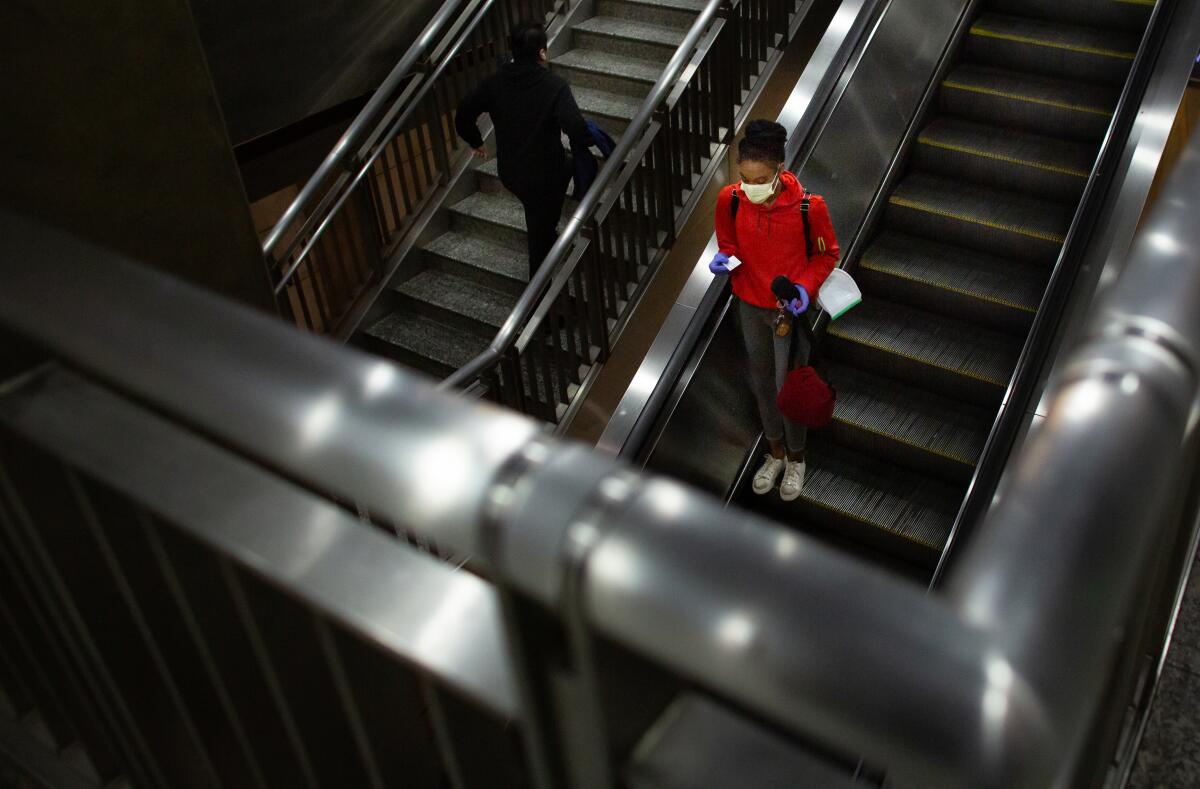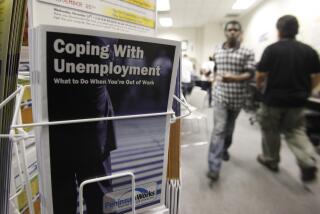Here’s how freelancers can get unemployment pay for work lost to coronavirus

- Share via
New coronavirus laws provide a litany of benefits to the self-employed, freelancers and workers in the gig economy. But what are the benefits, and how do you claim them? Here are some answers explaining how the laws affect freelancers.
I lost my part-time gig because of the coronavirus lockdown. Can I claim unemployment insurance?
Yes. The federal CARES Act creates a temporary Pandemic Unemployment Assistance program, which provides unemployment insurance coverage to self-employed individuals, independent contractors and those with limited work history. (You must be available for work but unable to do your job as a result of the pandemic.) All of these individuals were barred from claiming state unemployment insurance benefits prior to the passage of this law.
How much will I get?
That depends on where you live. Each state operates its own unemployment insurance program. Requirements and payout ratios vary from state to state. For instance, California’s unemployment insurance program provides about 46% of working wages, up to set limits. Maximum unemployment benefits amount to $450 a week.
Thus, if you previously earned $1,000 a week ($4,000 a month), you’d get $450 in weekly unemployment coverage, or $1,800 per month from the state of California. The new CARES Act adds a federal payment of $600 a week to that. So, this hypothetical worker could get as much as $4,200 a month.
However, if you live in Alabama, the state’s maximum weekly benefit caps out at $275. Thus, an unemployed worker in Alabama would receive a top benefit of $1,100, plus $600 weekly from the CARES Act, for a total of $3,500.
These are some of the unusual new scenes across the Southland during the coronavirus outbreak.
What if that’s more than I was making before the pandemic started?
To be frank, many experts contacted this week were uncertain how this would work. State unemployment programs are generally designed to provide a portion -- not all -- of what you earned when working. The CARES Act appears to provide benefits that could exceed what you earned when working. And, according to an analysis of the law by employment law specialists at Stroock & Stroock & Lavan, most eligible individuals would receive no less than the minimum required by the Disaster Unemployment Assistance program, plus $600 a week.
That means those who were earning relatively low wages could get more from this enhanced unemployment program than they’d get from wages. However, someone earning more than $53,000 would still just get a portion of their working wages.
Many organizations are enlisting independent contract workers during the coronavirus outbreak.
Will this last?
No. There are several sunset dates in the law. The extra $600 weekly payments end on July 31, 2020, says Elizabeth DiMichele, special counsel at Stroock.
Coverage of freelancers under the Pandemic Unemployment Assistance law starts retroactively on Jan. 27 and lasts until the end of the year. However, each individual freelancer receives a maximum of 39 weeks of benefits under this federal law.
Unless federal benefits are extended beyond that point, state unemployment insurance coverage restrictions would kick in then.
How do I claim benefits?
Through your state unemployment insurance program. (You can find a link to your state’s website here.)
But you may need to be patient and persistent, says Rafael Espinal, president and executive director of the Freelancers Union. With more than 3 million people swamping state unemployment websites with claims, Espinal says he’s heard that some sites are crashing mid-application. “Keep refreshing the page and trying to apply,” he advises. Your inability to get through to the site immediately does not jeopardize your benefits. Benefits can be paid retroactively.
What if I lost my job weeks ago?
Federal benefit payments under the Pandemic Unemployment Assistance program are retroactive to Jan. 27, 2020. If you lost your job as a result of the pandemic at any point after that, you can claim benefits for the lost weeks of work.
In addition, while some states have waiting periods to claim unemployment benefits, the federal law provides reimbursement to any state that waives these waiting periods. That’s likely to mean that your unemployment benefits will start from the date that you were first let go or unable to get to work because of the pandemic.
I wasn’t working yet, but I’d been offered a job that’s now on hold. Can I claim benefits?
Yes. The program also provides benefits to those who were offered work but now can’t start because the job was delayed or they cannot reach their work as the result of travel restrictions.
Remote jobs for the coronavirus era range from teaching to writing to web development.
I can’t work because I am caring for someone who is sick and am quarantined.
The law provides you with unemployment coverage, too. Apply online with your state unemployment insurance office. Self-employed individuals may also be entitled to a tax credit for sick days under the Families First Coronavirus Response Act, which was signed into law in mid-March. How the tax credit will be claimed, and whether there will be offsets for time that you claimed unemployment insurance, is currently unclear.
What about the $1,200 economic assistance payments?
Freelancers and self-employed individuals can qualify. If you filed a tax return in 2018 or 2019, and earned less than $99,000 individually or $198,000 as a couple filing jointly, you qualify for an economic impact payment. The amount of your payment will depend on your adjusted gross income.
Individuals with an AGI of $75,000 or less, and couples with an AGI of $150,000 or less, will get the full amount of $1,200 per filer ($2,400 per couple). Parents also receive $500 per qualifying child. Those who earn more will get a reduced payment until the payments evaporate completely.
Do I need to do anything to get the economic assistance payment?
Generally no. The payments will go out automatically in about three weeks. But there are some exceptions. If you have not filed a tax return for 2018 or 2019, you will need to file now, unless you already receive Social Security or Railroad Retirement benefits. In that case, you will also automatically receive a stimulus check, even if you don’t file a tax return. Many lower-income filers can file for free through the IRS’ free-file program.
Caution for RAL and RAC recipients
Additionally, if you filed a return but received a Refund Anticipation Loan or Refund Anticipation Credit, you’ll need to change your bank account information with the IRS, says Chi Chi Wu, staff attorney with the National Consumer Law Center.
That’s because RAL and RAC loans require consumers to set up separate accounts, which allow the tax preparation firm that provided the loan to collect the refund. The IRS is direct depositing economic assistance payments to the last account it has on file for any individual taxpayer. If that’s a RAL or RAC account, you should contact the IRS to make sure the payment goes directly to you.
How do I do that?
The government is setting up a dedicated website right now to handle these requests. Go to IRS.gov/coronavirus. Given the volume of requests during tax season, the agency is asking consumers to forgo phone calls and check the website for updates.
Kristof is the editor of SideHusl.com, an independent website that reviews money-making opportunities in the gig economy.
More to Read
Inside the business of entertainment
The Wide Shot brings you news, analysis and insights on everything from streaming wars to production — and what it all means for the future.
You may occasionally receive promotional content from the Los Angeles Times.












